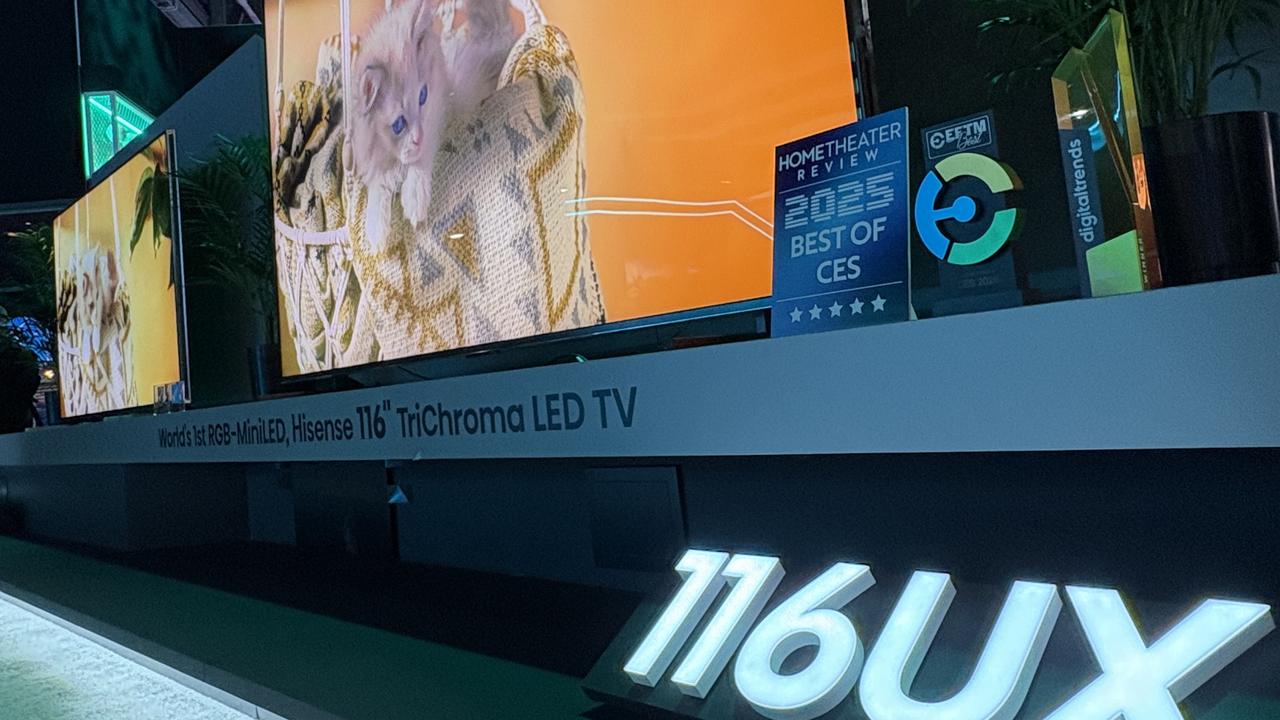Dolby Vision and Dolby Atmos are going to change to way we watch television forever
THERE are two new technologies coming to your living room that will make your television viewing experience more lifelike than you ever imagined.
IMAGINE if your television could broadcast images with richness, colour and details that are indistinguishable to how you would see them in real life.
Now consider if this was combined with a soundtrack that could also mimic the real-world environment — a helicopter flying overhead or a car screeching around the corner.
This technology is already available, with Dolby Laboratories working to revolutionise how people experience entertainment in the cinema, at home or on the go.
The ever-evolving technology is achieved through two different components — Dolby Vision and Dolby Atmos.
Dolby Vision leverages the maximum potential of new cinema projection technology
and new TVs to deliver high-dynamic-range (HDR) images and a wide-colour-gamut content for a refined, lifelike display.
Dolby Laboratories vice president of technology in the office of the CTO Pat Griffis said the technology is far less convoluted than it first appears.
“To a non-technical person, Dolby Vision enables us to get closer to seeing the highlights and blacks that human beings have been able to see for millions of years — as well as the ability to see the richness of colours seen in real-life on our displays,” he told news.com.au.
“Our aim is to get displays to appear as if you are looking through a window to see another lifelike world.”

There are currently three ways to improve picture quality for content for the home theatre experience:
• More pixels: — 4K, 8K, and beyond
• Higher frame rate
• Better pixels (high dynamic range and wider colour gamut)
While 4K televisions have more pixels and newer UHD TVs include high frame rates, these standards don’t allow each pixel to better represent the full range of brightness we see in reality.
Mr Griffis said Dolby Vision was looking to address this issue by using “smarter pixels”.
“When the Dolby Vision stream is sent to a high-end OLED or mainstream display, it uses the information to optimise the display of the content on scene by scene basis, which does a better job of reproducing the content as intended.”
While Dolby Vision is capable of optimising the display used, it has its limitations as most displays are limited by a maximum brightness of 100 nits — a unit of visible-light intensity.
As the technology is capable of showing a brightness of up to 10,000 nits, the picture quality available from Dolby Vision will only improve as displays get better.
Mr Griffis said Dolby Vision currently has partnerships with eight different manufacturers, but admits this will only increase over time too.
“Obviously Dolby Vision started with premium tier TV sets like LG’s OLED line-up because of the capabilities such displays offer,” he said.
“However, this year we are looking to bring the technology to more mainstream TVs, so people can have access to the technology regardless of the price point.”
DOLBY ATMOS
First introduced to the cinema in 2012, Dolby’s new technology now works with everything from a 192-speaker cinema set-up to a soundbar or comparable smartphones using stereo headphones.
Dolby Atmos is about creating a new immersive, multidimensional home theatre listening experience that is object-based, rather than channel-based.
Dolby Laboratories vice president of sound tech research and development Brett Crocket said this means the sound is not mixed to be heard from predetermined channel locations defined by the 5.1 or 7.1 speaker set up — instead it exists as individual entities, called audio objects.
“Dolby Atmos delivers moving audio that can be precisely placed in a three-dimensional space, including anywhere overhead,” he told news.com.au.
“Like Dolby Vision, Atmos allows the filmmaker to decide exactly where the sound should originate and where it should move as the scene develops.”
There are currently more than 70 audio/video receivers (AVR), 40 speaker models and 13 soundbars capable of delivering a Dolby Atmos audio experience, however users will be able to keep most of their existing sound system.
The only new purchase need for an authentic Dolby Atmos experience would be speakers designed to include both traditional front-firing and upward-firing elements in one cabinet — these allow for the ability to recreate overhead sounds.

Mr Crocket said the system had been designed to have up to 36 components — 24 on ground speakers, 10 overhead speakers and a subwoofer.
However, he said there is no need to go to this extent as the technology will employ spatial accuracy.
“Dolby Atmos knows where your speakers or soundbar are located and will render the audio to be delivered in the way creatives intended,” he said.
“We perform a lot of testing in odd shaped rooms and have found Dolby Atmos to be very resilient. We joke that we dare people to find a room that the technology will sound bad in.”
Even more impressive is the fact Dolby Atmos will offer the same effects through two-channel headphones plugged into Atmos-capable smartphones, tablets and notebooks.
“When you’re in a room listening to any sound — speakers or reality — your body interacts with soundwaves and there is a time difference between how that sound travels and when it reaches your ears,” he said.
“We added those perception cues to normal two-channel headphones to trick the brain into the thinking the sound is three dimensional.”
The technologies are currently available for 150 blockbuster titles, with plenty more to come this year.
What are your thoughts on Dolby Vision and Dolby Atmos? Continue the conversation in the comments below or with Matthew Dunn on Twitter or Facebook.



